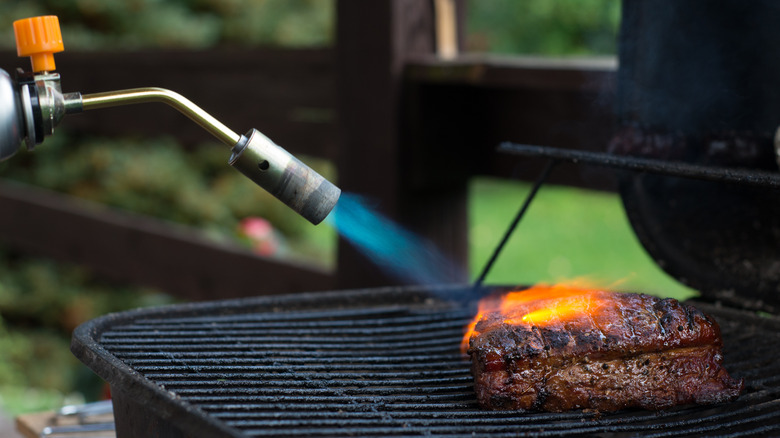The reverse sear method for cooking steak has gained popularity among home chefs for its ability to achieve a just-right, evenly cooked interior with a perfectly flavored caramelized crust. Creating that tasty sear with a kitchen blowtorch takes this culinary technique to the next level, offering several advantages that enhance both the texture and presentation of the steak. It can be particularly useful when searing a steak with irregular shapes or hard-to-reach areas, for example, if a bone stops the meat from fully coming into contact with the hot pan. Unlike traditional searing methods, the torch allows chefs to target specific spots, ensuring an even and controlled finish across the entire surface of the steak. But what about the funky flavor that torch gas sometimes leaves behind on the steak?
It turns out that the propane (and butane) gas used in the torch is completely odorless and tasteless, but the manufacturers add an aroma ingredient so you can detect a leak. This chemical burns off with a proper flame, but unburned, it may be responsible for that off taste. The trick to preventing any possible chemical residue taste is to be sure the torch burns a hot, blue flame.
Burning hot for a quick sear and best flavor

A blue flame on your torch signifies complete combustion, indicating that the fuel is burning efficiently with sufficient oxygen, and there is none of the gas or odorant left to add flavor to your steak. High-quality kitchen torches have a knob to adjust if the flame is yellow, it’s a simple twist to get the right flame. If your torch doesn’t have an adjuster, the absence of a blue flame could mean your propane container is getting empty or not attached properly. Another tip is to be sure you are not pointing the torch at your steak when you ignite the flame because the initial burst of gas doesn’t have a chance to burn off, leaving flavor behind.
A blue flame also burns at a higher temperature than a yellow one, making it more suitable for tasks requiring intense heat, like torching a steak. If you’ve taken the time to slow-cook your steak for a nice reverse sear, you’ll want to create the crust quickly to avoid overheating the whole steak and ruining the interior. So a blue flame on your torch is the best for not only avoiding off flavors but getting that brown crust done properly, too.






